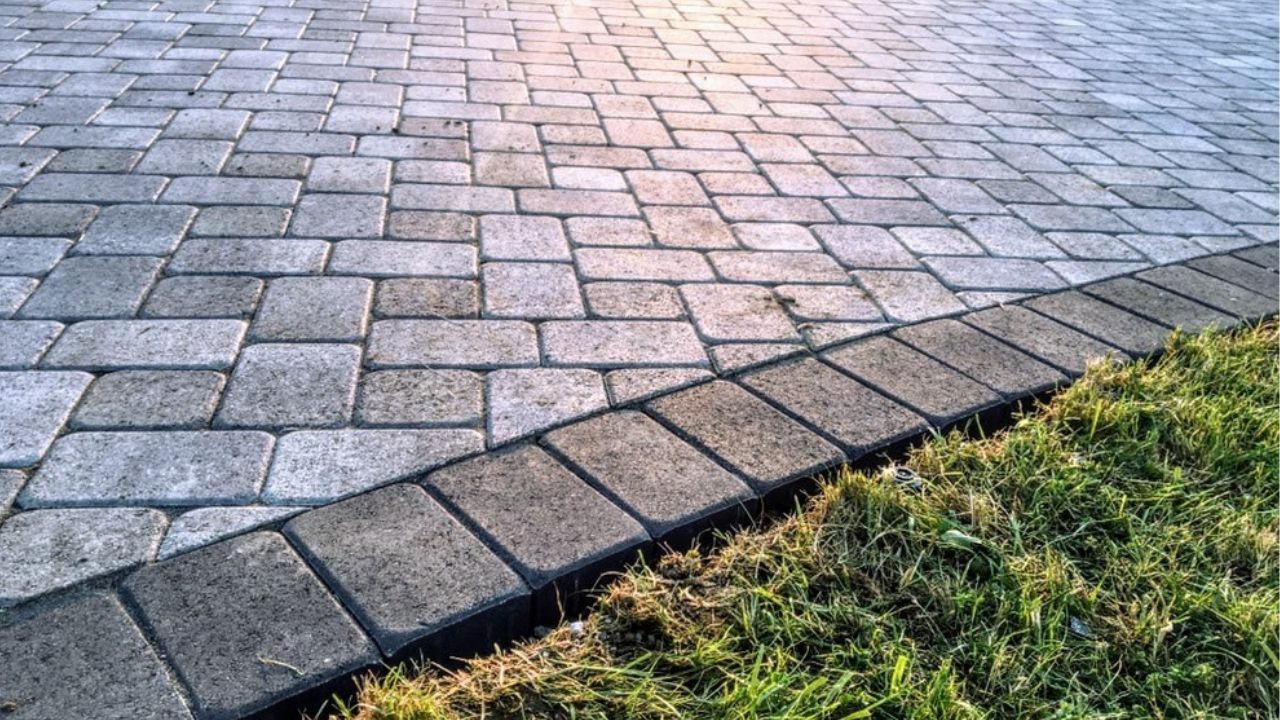Labor Cost to Install Pavers Calculator
Calculating the labor cost to install pavers is pivotal in planning your outdoor enhancement project. Pavers offer aesthetic charm and durability, making them a sought-after choice for pathways, patios, and driveways. Understanding the intricacies of labor expenses is vital for budgeting effectively. The labor cost depends on multiple factors, including project size, paver type, design complexity, and location. Generally ranging from $5 to $35 per square foot, labor expenses encompass tasks such as excavation, base preparation, paver installation, and finishing touches. To streamline this estimation process, a paver installation cost calculator proves invaluable, offering insights into potential expenses based on your project’s unique parameters.

This knowledge empowers you to embark on your paver installation journey well-prepared and confident in managing your budget efficiently.
Frequently Asked Questions
A labor cost to install pavers calculator is an online tool that helps estimate the labor expenses involved in a paver installation project. It considers various project-specific details to provide a rough estimate of the labor costs.
The estimates from a paver installation cost calculator are reasonably accurate as they consider multiple project factors. However, they are baseline figures and can vary based on unforeseen complications or design changes during the actual installation.
To use a paver installation cost calculator effectively, you typically need to input details such as the project’s dimensions, the type of pavers you plan to use, design complexity, and your location.
Using a calculator helps you get a ballpark estimate of labor costs for your project, aiding in budgeting and planning. It also assists in comparing quotes from contractors to ensure fair pricing.
Paver installation cost calculators primarily focus on labor costs. While they offer a crucial piece of the budgeting puzzle, they do not typically include material costs or other project expenses.
Factors Influencing Labor Cost
When considering the labor cost of installing pavers, it’s important to take into account several key factors that can greatly impact the overall expenses. These factors go beyond just the basic installation process and delve into the specifics of the project and its requirements. Here are some detailed subheadings and paragraphs that expand on each factor:
1. Project Size:
The size of the project area plays a crucial role in determining the labor cost for paver installation. Larger spaces naturally require more time, effort, and resources to complete. The process of laying down pavers involves multiple steps, including excavation, leveling, compacting the base, laying the pavers, and securing them in place. With a larger project area, each of these steps becomes more extensive, leading to an increase in the required labor hours. Additionally, larger spaces might involve more intricate patterns or designs, adding to the project’s complexity and subsequently affecting labor costs.
2. Paver Type
The type of paver material chosen for the project has a significant impact on labor costs. Different paver materials come with various price points, reflecting factors such as durability, aesthetics, and maintenance requirements. For instance, natural stone pavers are often more expensive than concrete pavers due to the inherent cost of the material. Moreover, the size and quality of the pavers also contribute to the overall cost. Larger or irregularly shaped pavers might require more careful handling and cutting, which can add to labor expenses.
3. Design Complexity:
The complexity of the design and pattern you choose for your paver installation can substantially influence labor costs. Elaborate designs, intricate patterns, or non-standard shapes demand more attention to detail during installation. The process of aligning and fitting pavers precisely according to a design requires additional time and effort from skilled workers. As a result, the more intricate the design, the more labor hours will be required, ultimately impacting the overall labor cost of the project.

4. Site Preparation:
The condition of the site before paver installation is another factor that can affect labor costs. If the area requires extensive site preparation, such as excavation, soil grading, or removal of existing structures like old concrete or debris, the labor hours dedicated to these tasks will increase. Proper site preparation is essential for creating a stable and durable foundation for the pavers. However, the additional labor required for such tasks can contribute to higher overall labor costs for the project.
5. Labor Rates:
Labor costs can vary significantly based on several factors, including geographic location, availability of skilled workers, and prevailing wage rates in the area. Urban areas with higher living costs and wages may have higher labor rates compared to rural regions. Additionally, the availability of experienced paver installers can impact labor costs. In areas where skilled labor is scarce, the cost of hiring qualified workers might be higher. It’s essential to consider these local labor rate variations when estimating the overall labor cost for paver installation.
Calculating Labor Cost for Paver Installation
Calculating the exact labor cost for paver installation is indeed a multifaceted task due to the numerous variables at play. While arriving at an absolutely precise figure can be elusive, estimating provides you with a solid foundation for budgeting your project. On average, labor costs for paver installation generally span between $5 to $35 per square foot. This range encompasses various critical aspects of the installation process, including excavation to create a stable foundation, meticulous leveling to ensure proper drainage, the precise laying of pavers, and the essential finishing touches that enhance both the aesthetic appeal and durability of your project. However, it’s vital to acknowledge that this range is just a starting point, as the final labor cost can be significantly influenced by factors such as the project’s unique intricacies, geographical location, labor market dynamics, and the level of expertise you seek in your installation team. Therefore, while this range provides a helpful reference point, consulting with experienced professionals and obtaining detailed quotes tailored to your specific project remains the most prudent approach to ascertain the labor costs accurately.
Step-by-Step Paver Installation Cost Estimation
When estimating the labor cost for a paver installation project, it’s essential to break down the process into detailed steps, each of which contributes to the overall expenses. Here’s a comprehensive look at the various stages of paver installation and how they influence labor costs:
1. Preparing the Surface
Properly preparing the installation area is the first critical step in paver installation. This process involves clearing the designated space of any vegetation, debris, or obstructions. Additionally, the condition of the soil must be assessed to determine if it can adequately support the pavers. This preliminary work requires time and effort from the installation team and contributes to the labor cost.
2. Paver Pattern and Design:
The choice of paver pattern and design is a crucial aesthetic aspect of any paver project. However, it’s important to recognize that more intricate designs and patterns demand meticulous placement and alignment of the pavers. Achieving precise angles and curves in the design requires skilled labor and additional time, which directly impacts labor costs. Additionally, for non-standard patterns, custom cutting of pavers may be necessary, further adding complexity and labor hours.
3. Excavation and Base Preparation:
The excavation and base preparation phase is a labor-intensive aspect of paver installation. This step involves digging out the area to the appropriate depth to accommodate the pavers and the base materials. Creating a stable and well-compacted base is essential for preventing future settling of the pavers and ensuring proper drainage. Excavation and base preparation are time-consuming tasks that significantly contribute to the overall labor cost of the project.

4. Actual Paver Installation:
The installation of the pavers themselves is a precise and labor-intensive task. Skilled workers are needed to align, space, and secure each paver in place according to the chosen pattern and design. This step requires careful attention to detail and precision, as even minor misalignments can impact the overall aesthetics and functionality of the paver surface. The more intricate the pattern or design, the more labor hours will be required to complete this phase.
5. Cutting and Edging:
Customization often plays a role in paver installations, particularly when dealing with irregular spaces or intricate designs. Cutting pavers to fit specific areas or edges requires additional labor and time. Properly edging the paver area is also crucial for a clean and finished look, and this task adds complexity to the project, contributing to labor costs.
6. Sand Bedding and Finalizing:
The final step in paver installation involves applying a layer of sand to set the pavers and then compacting them into place. This step is essential for achieving a stable and level surface. The proper application and compaction of the sand bed demand careful attention and skilled labor to ensure a long-lasting result. It’s a critical phase that should not be rushed, and the labor involved in this step contributes to the overall project cost.
The Importance of Professional Installation
Choosing a professional paver installation goes beyond aesthetics; it is a guarantee of longevity and peace of mind. Experienced installers bring a wealth of knowledge to your project, understanding the intricate details of proper installation that can make all the difference in the long run. They are well-versed in the art of creating a stable foundation, meticulously aligning pavers, ensuring proper drainage, and employing the correct techniques for lasting results.
Professional installers are skilled at preempting potential issues that might arise during and after installation, such as uneven settling or drainage problems. Their expertise allows them to make real-time adjustments, ensuring your paver project not only looks stunning upon completion but remains functional and durable over the years.
Professional installation often comes with warranties, providing an added layer of protection for your investment. Should any issues arise due to installation defects, these warranties can save you from unexpected repair costs. So, while the allure of a DIY project might seem enticing, the wisdom of entrusting professionals cannot be overstated when it comes to safeguarding the beauty and resilience of your paver installation.
DIY vs. Hiring Professionals
The allure of a DIY paver installation project is undeniable, often driven by the prospect of cost savings. However, it’s essential to weigh the potential long-term consequences against these short-term savings. DIY endeavors can indeed be rewarding, but when it comes to paver installation, the lack of experience can inadvertently lead to costly mistakes down the road.
Paver installation is a specialized craft that demands precision and expertise. While DIY enthusiasts may have the best intentions, without the knowledge and skills honed by professionals, common errors such as improper base preparation, uneven alignment, or inadequate drainage may occur.
These seemingly minor missteps can escalate into major issues, necessitating extensive repairs or even a complete redo, ultimately eclipsing any initial cost savings.
Hiring professionals, on the other hand, ensures a seamless installation process from start to finish. Experienced installers bring a wealth of knowledge and hands-on experience to your project. They understand the nuances of paver installation, from selecting the right materials and patterns to meticulous placement and attention to detail. This expertise not only results in a visually stunning outcome but, more importantly, a durable and long-lasting installation that stands the test of time.

Professional paver installation often comes with warranties, offering added peace of mind. In the event of any installation-related issues, these warranties can save you from unexpected expenses. So, while the prospect of a DIY project might be tempting, it’s crucial to recognize that hiring professionals isn’t just an investment in a beautiful paver installation—it’s an investment in its long-term integrity and your satisfaction as a homeowner.
Paver Installation Cost Calculator: Simplifying Your Planning
The quest to streamline your paver installation project’s financial planning, there exists a valuable tool at your disposal: the paver installation cost calculator. These user-friendly online utilities are designed to simplify the often complex task of estimating project costs. By inputting specific project details, such as dimensions, paver type, design intricacies, and your geographical location, these calculators yield reasonably accurate labor cost estimates tailored to your unique requirements.
What sets these calculators apart is their ability to account for the intricacies of your project. Whether you’re envisioning a sweeping patio, an intricate mosaic pattern, or a straightforward driveway, these tools adapt to your vision. They factor in variables like materials, labor rates, and regional cost disparities, ensuring that the estimate you receive is as close to reality as possible.
By harnessing the power of a paver installation cost calculator, you empower yourself with a valuable planning resource. These estimates not only enable you to budget more effectively but also serve as a benchmark when evaluating quotes from professional installers. This way, you can embark on your paver installation journey well-prepared, confident in your financial planning, and equipped to make informed decisions that align with your project goals and budget.
How to Use the Paver Installation Cost Calculator
Using a paver installation cost calculator involves these steps:
Enter Project Details: Input project size, paver type, design complexity, and location.
Calculate Costs: The calculator processes the data and estimates the labor cost.
Understanding the Results
When you utilize a paver installation cost calculator, the figures it provides serve as a valuable baseline for estimating your labor costs. This baseline is an essential starting point, offering you a reasonably accurate idea of what to expect when budgeting for your project.
However, it’s crucial to remember that the calculator’s results are based on the information you input, and they are subject to certain assumptions. The estimate assumes a relatively straightforward project without unexpected complications or major design alterations. Real-world projects often encounter unforeseen challenges, such as uneven terrain, hidden obstacles, or changes in the initial design plan.
These unexpected variables can impact the final cost of your paver installation. For instance, if the excavation process reveals the need for additional work to create a stable base, or if you decide to make design changes mid-project, these factors can influence labor hours and materials, potentially increasing the overall expenses.
To navigate these potential deviations from the initial estimate, it’s wise to incorporate a contingency fund into your budget. This safety net accounts for unforeseen circumstances, providing financial flexibility to address any surprises that may arise during the paver installation process.
Budgeting Tips for Paver Installation
Now, let’s explore some practical tips to help you manage your paver installation project budget effectively:
1. Overestimate:
When budgeting for your project, it’s prudent to err on the side of caution by overestimating your expenses. Unforeseen costs can arise due to factors like excavation challenges, design modifications, or unexpected material requirements. Allocating a buffer in your budget ensures you’re financially prepared to handle these surprises without jeopardizing the project’s completion.
2. Get Multiple Quotes:
It’s advisable to obtain quotes from various contractors, including input from Pavers Experts, to gain a comprehensive understanding of the pricing landscape. Different contractors may offer varying rates and services. By comparing these quotes, you can identify competitive pricing while evaluating the expertise and reputation of potential installation teams.
3. Material Quality:
While budgeting, prioritize investing in high-quality pavers. Quality pavers not only enhance the aesthetic appeal of your project but also contribute to its longevity and durability. Cutting corners on materials might lead to higher maintenance costs or the need for premature repairs, which can outweigh any initial cost savings.
Let Us Help Our Paver Contractors
Check out the video
Service Locations
SERVICE AREA
Serving Our Community
TESTIMONIALS
What Our Customers Say















